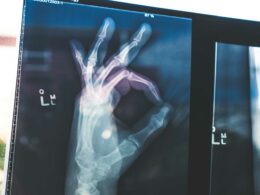User experience (UX) is misunderstood and can often be a better fit for projects than traditional market research (MR), a panel at the MRS Impact 2021 conference has said.
Appearing on the panel was Gemma Newell, creative director for director research at the BBC; Giles Colburne, founding partner and chief executive at Cxpartners; and Lisa Payne, creative director of design strategy and research at Sky.
by Liam Kay
UX, according to Colburne, was a better fit than market research for many projects that needed constant engagement with users to direct product design. “Little and often is the key when it comes to UX,” he said.
“The times when it is most useful to turn to MR is the very early stages of a product, where you are trying to understand if there is an issue worth solving. MR can bring a sense of the scale of the current situation. I am always sceptical of MR when it is applied to need.”
He was also critical of research projects that focused on whether customers think a product would be ‘useful’, arguing this ignores whether they would actually buy the product once available.
“I think if you are creating something new, it is a really poor predictor of whether or not something will be taken up by an audiences,” he said. “Audiences themselves have difficulty imaging how they might behave in certain situations. There is a really poor correlation there.”
Payne said the Amazon Echo was a good example of a product which would have been difficult to imagine in testing, but which when produced was popular for its voice-controlled and hands-free functions.
“It is about knowing the needs of the customer,” she said. “It is really about understanding how they fill gaps based on behaviours and what is needed.”
Newell also said that user experience (UX) was misunderstood by many researchers, and was not solely about doing product testing with smaller groups of people.
“That is a bit of a misnomer,” she said. “On an individual project we might be dealing with smaller numbers and looking more in-depth, but we approach it as a programme of research, not just a one-off ad-hoc project.
“When you bring the process all together, you have spoken to a huge range of people from a wide range of backgrounds, and that helps you uncover all the different elements that might be relevant to that research project.”
Colburne agreed. “You are constantly adding to your knowledge and going back to users and learning something more. It is about building a model of user behaviour and their environment, and adding to it constantly.
“Gradually over time you build up a better picture, your decisions become more informed and you won’t be revisiting the same questions again.”
Storytelling was seen as vitally important by the panel. “It is about the depth you can bring in,” said Newell.
“It is not just about being focused on the product you are researching, but it brings in everything around that within a person’s life and shows how a product fits into that context. That’s where the real value comes.”
Colburne added: “Stories spread. They get told and retold throughout the organisation. If you can shape a clear, coherent story out of user experience research, it sends ripples throughout the organisation.”
Payne ran a longitudinal study on 12 families during lockdown, which she said highlighted the benefits of wide-ranging research that could create “spinoff projects left, right and centre”.
She said: “The value that longitudinal study delivered was way beyond what any survey or box-ticking exercise could achieve.”
This article originally appeared in ResearchLive. Photo by Clay Banks on Unsplash.












